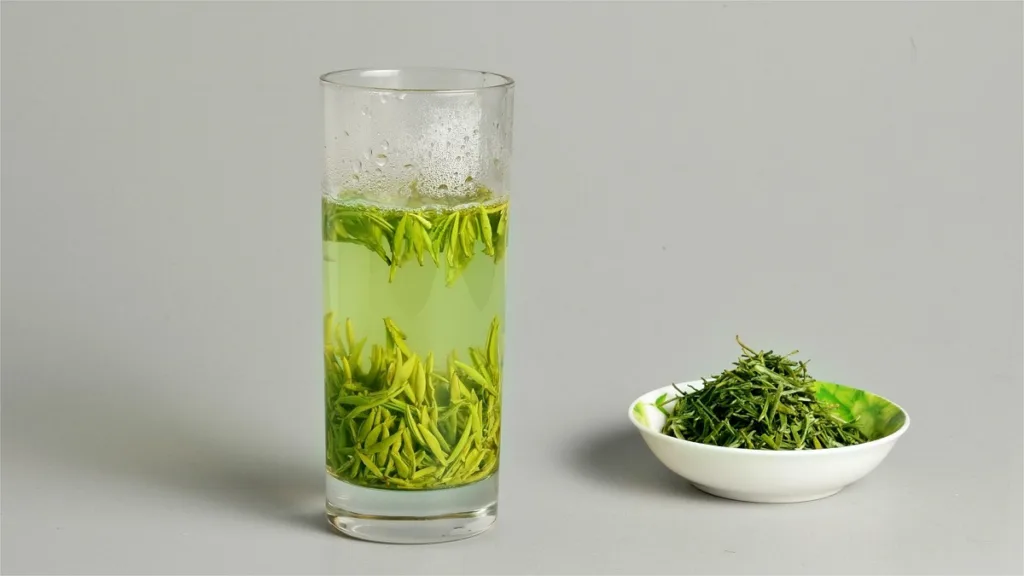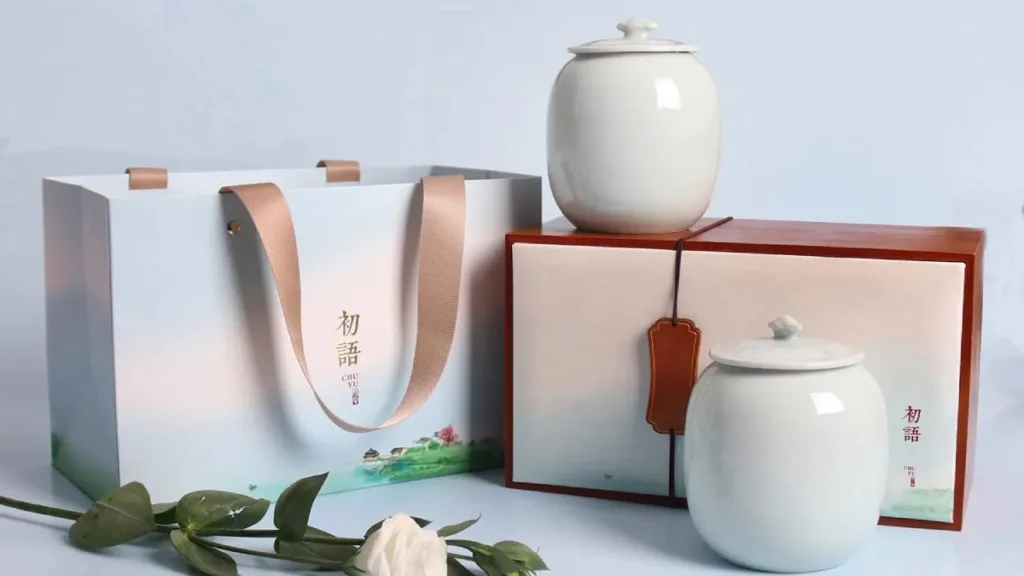Longjing Shrimp, a traditional culinary masterpiece hailing from Hangzhou, Zhejiang Province, China, is a delectable fusion of tea and succulent shrimp. This dish is a harmonious blend of flavors and textures, with an overall profile that is refreshingly tender and aromatic. The pristine white shrimp are both fresh and tender, while the tea leaves impart a delicate fragrance. The resulting dish is a visual and gustatory delight, with a graceful appearance, a hint of tea aroma within the shrimp, and a subtle essence of shrimp in the tea. Longjing Shrimp is known for its ability to stimulate the appetite, and leave a lingering aftertaste that is truly unforgettable.
History of Longjing Shrimp
Historical records suggest that as far back as the late Qing Dynasty, skilled chefs in Anhui were already experimenting with stir-frying river shrimp using tea leaves, such as “Que She” (Sparrow’s Tongue) and “Ying Zhao” (Eagle’s Claw). Gourmet writer Gao Yang mentioned this dish in his book “Ancient and Modern Food,” where he referred to it as “Dragon Well Shrimp,” signifying the use of West Lake Longjing tea leaves to stir-fry the shrimp.
In the 1920s, Longjing Shrimp gained popularity among ordinary households in Hangzhou. By the 1930s, chefs in Changshu included Longjing Shrimp in their culinary repertoire. Notably, in 1972, during his historic visit to China, American President Richard Nixon was hosted by Premier Zhou Enlai in Hangzhou, and Longjing Shrimp was featured on the menu.
Legend of Longjing Shrimp
According to legend, Emperor Qianlong of the Qing Dynasty, while traveling in disguise, visited the home of a tea farmer in Hangzhou and sampled a cup of freshly brewed Longjing tea. The Emperor was so impressed by the tea’s delicate flavor and aroma that he discreetly plucked some tea leaves when nobody was looking. Later, when dining in a local restaurant, he instructed the waiter to use these tea leaves to brew a pot of tea. The waiter, noticing a corner of the Emperor’s dragon robe, hurriedly added the tea leaves to a pot of shrimp that was being cooked. To everyone’s surprise, the dish turned out to be remarkably exquisite. It was a serendipitous blend of flavors and textures, with the tea leaves imparting a beautiful color and unique taste to the shrimp. Emperor Qianlong nodded in approval, and this dish became known as “Longjing Shrimp,” a famous Hangzhou delicacy that continues to be celebrated to this day.
Health Benefits of Longjing Shrimp
Longjing Shrimp is more than just a delightful gastronomic experience; it also offers several health benefits. Shrimp is a rich source of taurine and magnesium, which are known to protect the cardiovascular system. Taurine helps lower cholesterol levels, prevents atherosclerosis, and expands the coronary arteries, making it beneficial for preventing high blood pressure and myocardial infarction. Shrimp meat is tender and easily digestible, making it an excellent choice for individuals with weakened health or those in need of post-illness recovery. It contains an array of essential micronutrients like potassium, iodine, and phosphorus, along with vitamins like vitamin A, making it a valuable food for nutritional support.
Longjing tea, a fundamental ingredient in this dish, boasts an array of health-promoting compounds, including amino acids, catechins, chlorophyll, and vitamin C. It is known for its ability to quench thirst, lower blood pressure, inhibit platelet aggregation, exhibit antibacterial properties, offer anti-allergic effects, and act as an antioxidant. The presence of fluoride in tea also enhances dental health by improving the teeth’s resistance to acid and decay.
Recipe of Longjing Shrimp
Now, let’s explore the recipe for preparing Longjing Shrimp:
Ingredients:
- Shrimp, peeled and deveined
- Longjing tea leaves
- Salt
- Monosodium glutamate (MSG)
- Egg white
- Cooking oil
- Cooking wine
Instructions:
- Start by washing the shrimp thoroughly. This is done by repeatedly rinsing them with water three times until the shrimp turn a pristine white color. Afterward, drain the excess water or use a clean, dry cloth to pat them dry.
- In a bowl, place the shrimp and add salt, MSG, and egg white. Stir the mixture with chopsticks until it becomes slightly sticky. Then, add dry starch to the mixture, stirring until it is well coated.
- Take a teacup and add Longjing tea leaves. Pour approximately 50 grams of boiling water into the cup, letting it steep for one minute. Filter out 40 grams of tea extract, reserving both the tea leaves and the extract.
- Heat a wok, add cooking oil, and bring it to about 45% to 50% heat. Quickly add the shrimp to the hot oil, using chopsticks to disperse them. After about 15 seconds, remove the shrimp from the oil and drain excess oil in a sieve.
- In the same wok with a small amount of retained oil, return the shrimp, and promptly pour in the reserved tea leaves and tea extract. Add cooking wine, salt, and MSG. Stir the contents for a few moments until the shrimp are evenly coated and infused with the tea flavor.
- Your Longjing Shrimp is now ready to be plated and served, delighting your taste buds with its unique blend of flavors and textures.
Longjing Shrimp is a testament to the artistry of Chinese cuisine, merging tradition with innovation to create a dish that tantalizes the senses and celebrates the rich heritage of Hangzhou’s culinary culture. The delicate flavors of the shrimp, combined with the fragrant essence of Longjing tea, make this dish a culinary masterpiece that continues to captivate the palate and pay homage to its historical origins.




